How to Use a Z-Slider Patient Transfer Sheet
A z-slider is a patient transfer sheet. It is used similarly to the way a draw sheet or an incontinence pad can be used to help reposition or transfer a patient. It was made by the company Sandel. Their slogan is: "Leaders in healthcare safety" They have multiple products that were made for the medical field.
Printed instructions In depth instructions More info Lifting Sandel Save/pin
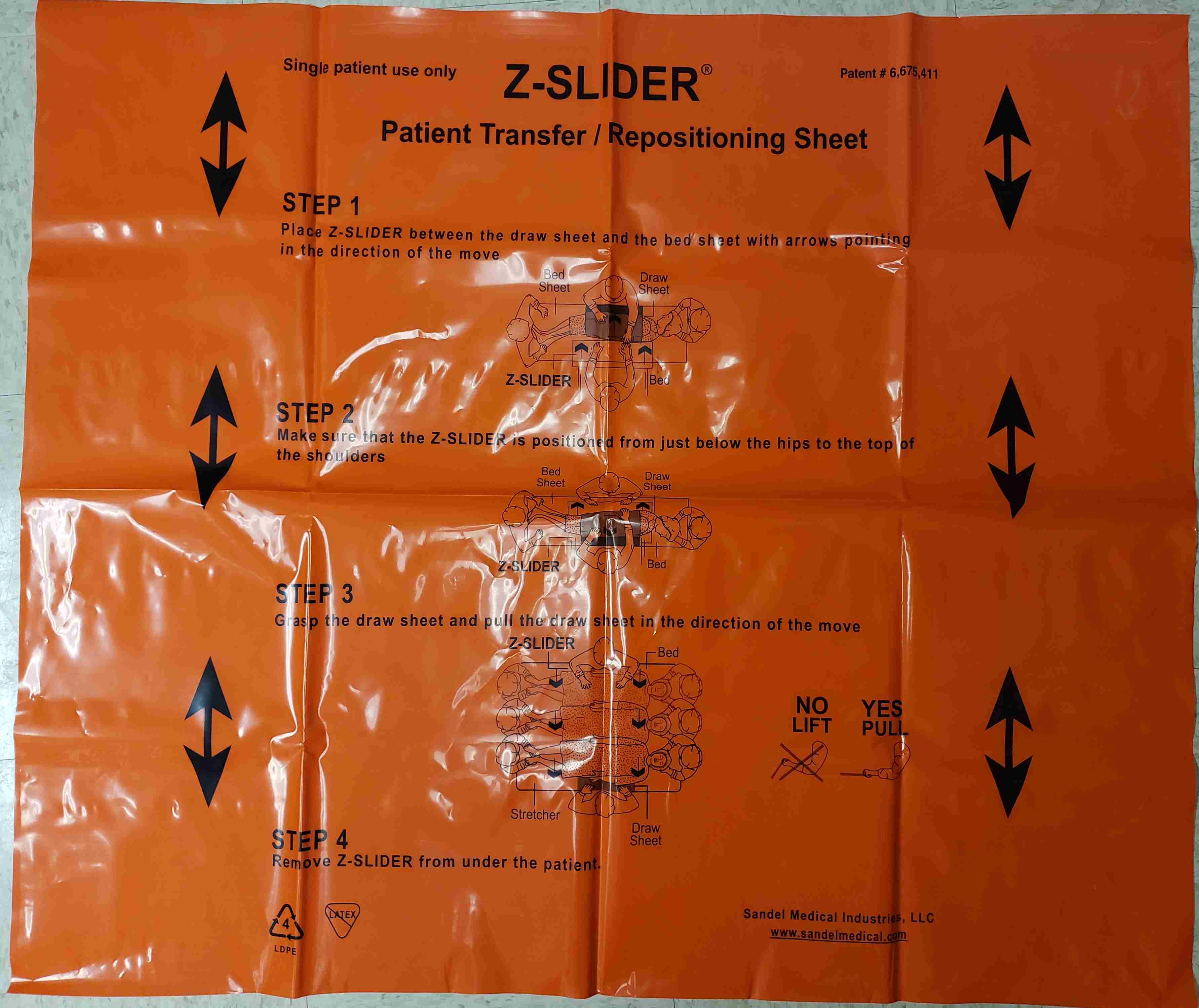 Z slider unfolded
Z slider unfoldedInstructions as Printed on the Z Slider Itself
Step 1: Place Z-slider between the draw sheet and the bed sheet with arrows pointing in the direction of the move.
Step 2: Make sure that the Z-slider is positioned from just below the hips to the top of the shoulders.
Step 3: Grasp the draw sheet and pull the draw sheet in the direction of the move.
Step 4: Remove Z-slider from under the patient.
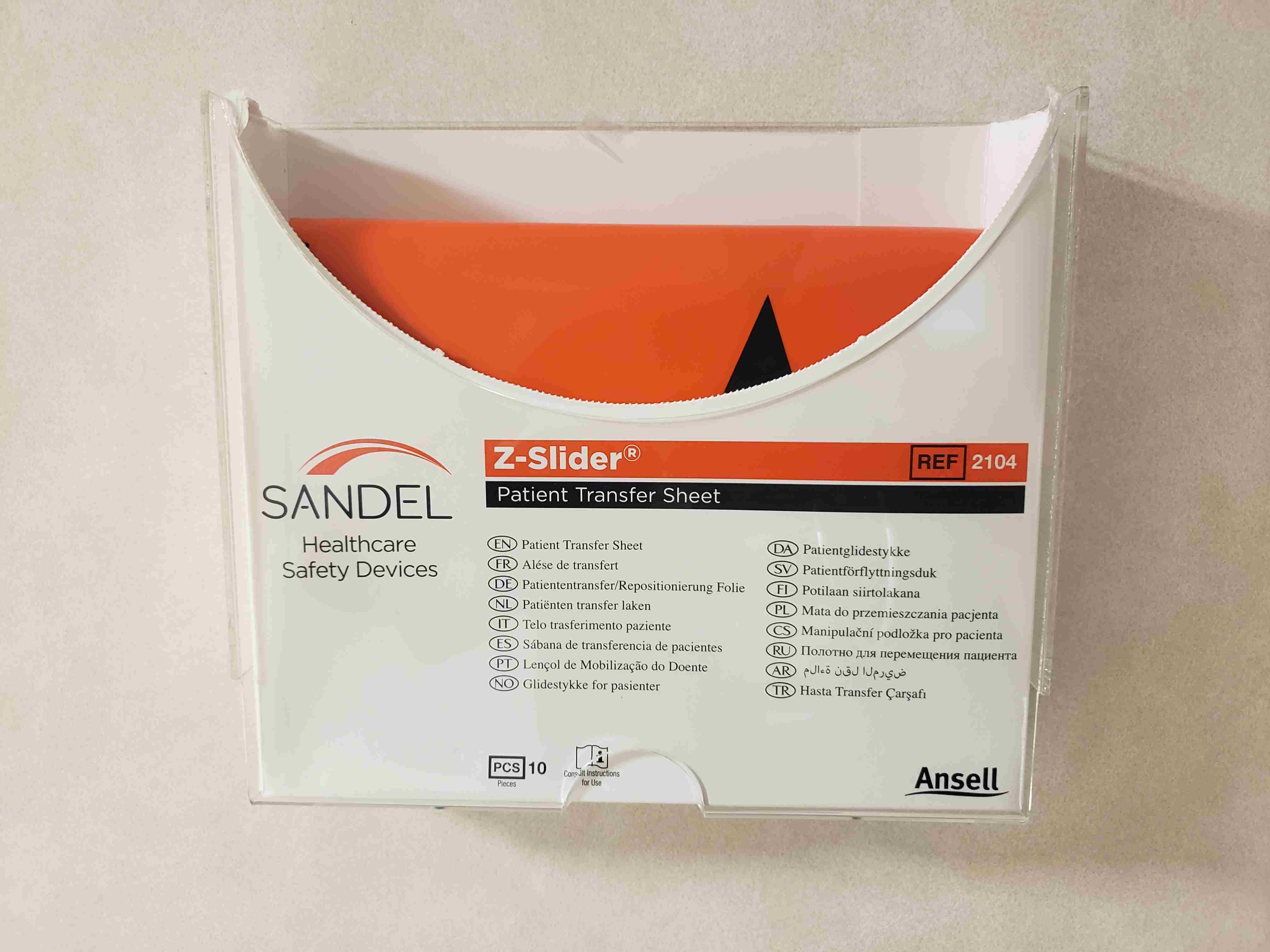 Z slider dispenser
Z slider dispenserIn Depth Instructions
Once you remove a z slider from its point of use dispenser, unfold it completely. Be aware that they are two-ply so unfolding them completely will leave two plastic sheets laying on top of each other. Instructions will be printed on the sheet. There will be multiple arrows that point in the direction in which the patient will slide.
It is best to perform the reposition/transfer with at least two caregivers with one on each side of the bed. The z slider is placed under the patient similarly to an incontinence pad.
- First, roll up half of the slider in your hands. Have another caregiver log roll the patient onto their side. Tuck the rolled up portion of the pad underneath the patient's back between the fitted sheet and the draw sheet/incontinence pad. Position the slider so that one end is below the patient's hips and the other end is near the top of their shoulders.
- Then roll the patient onto their other side. This exposes the rolled up portion of the z slider. Unroll it and laid flat on the bed. Now lay the patient back onto their back.
- Now the draw sheet or incontinence pad can be pulled in any direction with ease in order to transfer the patient from a stretcher to a bed, or bed to a stretcher. It can also be used to reposition them in bed such as sliding them up if they are too far down.
- The z slider is removed similarly to how it was placed. To do so, roll the patient to one side. Then roll or tuck the slider underneath the patient's back as far as possible. Next roll them onto their other side and completely remove the slider. You can either throw it away in a standard waste or recycle bin, or store it away for later use.
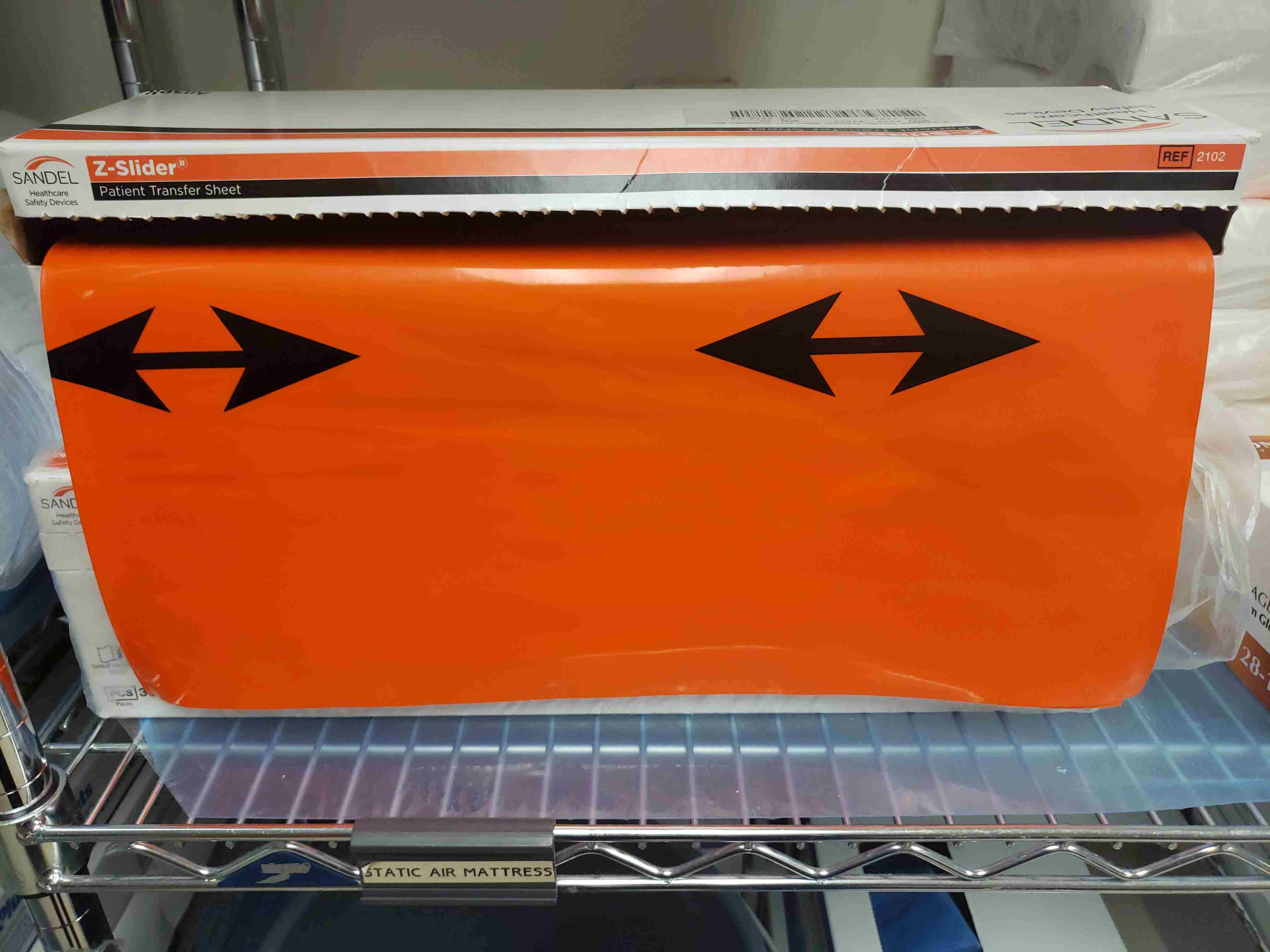 Z slider conveyor belt
Z slider conveyor beltMore Basic Z Slider Information
- The Z slider greatly reduces friction which helps to reduce the energy required to slide, transfer, and reposition patients.
- They reduce bruising, abrasions and skin tears when compared to using just a draw sheet or incontinence pad.
- They are beneficial for healthcare workers by supporting ergonomic techniques that reduce the risk of disabling back injuries.
- They are cost effective and are usually bought in bulk to reduce prices further.
- The two ply plastic sheeting is paper thin making it extremely lightweight yet highly durable.
- They are made strong enough for multiple uses, but are designed to be used by only one patient which eliminates the risk of cross contamination and healthcare associated infections.
- One slider should not be used by multiple patients. Once they no longer need it, it is considered standard waste and should be thrown away.
- The dimensions of the regular sheet laid out flat are 33 inches by 39 inches or 84 cm by 99 cm.
- The total recommended weight capacity is 500 lbs for the full size and 250 lbs for the smaller single packs.
- There are what are called point of use dispensers that can be placed in optimal spots for ease of use. This could be places like hospital hallways or individual rooms.
- They are delivered in multiple different ways including folded up in boxes or in a pack of 30 rolled up in a conveyor belt-like fashion.
- There are single packs with one z slider that are small enough to fit in scrub pockets for extra accessibility.
- They are recyclable.
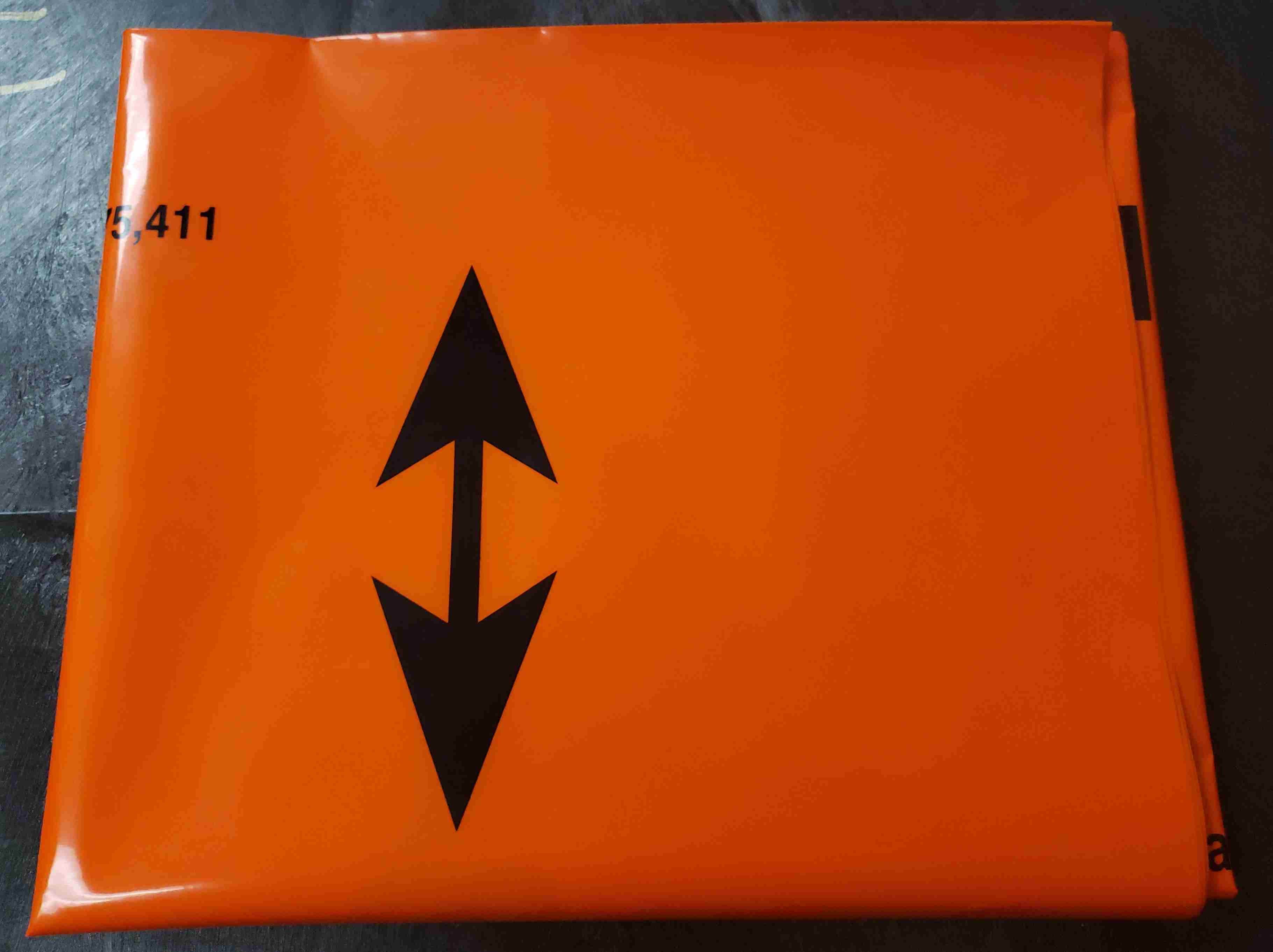 Z slider folded
Z slider foldedImproper Lifting Techniques
Several nursing agencies claim that nurses and other healthcare workers often use improper lifting techniques that cause back and other injuries. Each of these individual injuries can costs companies thousands of dollars adding up to $37,000 in direct costs and from $147,000 to $300,000 in indirect costs. Out of any occupation or industry, nurses actually have the highest claim rates of back strain, pain, and injury.
Because of this, the Occupational Safety and Health Administration (OSHA) is striving to have manual lifting eliminated, or at least minimized, in the medical field. Some healthcare facilities have even passed no lift laws in certain states in America. Of course it isn't realistic to believe all manual lifting will be eliminated, but it is certainly decreasing and will continue to decrease over time.
Statement from Sandel
"The Z slider is another nurse inspired safety innovation from Sandel medical industries, Leaders in healthcare safety through direct involvement with nurses and innovation. Sandel provides an umbrella of safety solutions to protect healthcare practitioners, patients, facilities while supporting worker retention, OSHA compliance, and the bottom line. Our line of innovative safety products were developed through our model of collaboration with nurses and surgical teams by listening to their needs and suggestions."
Save/pin this info!
List of Caregiver Supplies and Equipment
From How to Use a Z Slider Patient Transfer Sheet to Home
References:
http://www.sandelmedical.com/products.asp?id=799
https://www.ansell.com/us/en/products/sandel-z-slider-patient-transfer-sheet
Recent Articles
-
Common Truck Crash Injuries and Legal Remedies - Caregiverology
Jul 19, 25 10:49 AM
Known for its sun-drenched beaches, vibrant arts scene, and bustling maritime industry, Fort Lauderdale is a city that sees heavy traffic both on its roads and at its busy port. Unfortunately, with th… -
Why Expert Legal Help Matters After Serious Injury - Caregiverology
Jul 19, 25 10:35 AM
In Houston, over 67,600 car crashes occurred in 2023, resulting in 290 fatalities and 1,612 serious injuries. That’s roughly 185 accidents every day. -
How Life Care Planners Support Injury Recovery - Caregiverology
Jul 19, 25 10:18 AM
In Los Angeles, life care planners play a vital role in supporting injury recovery, especially for individuals facing catastrophic injuries such as traumatic brain injuries or spinal cord damage.

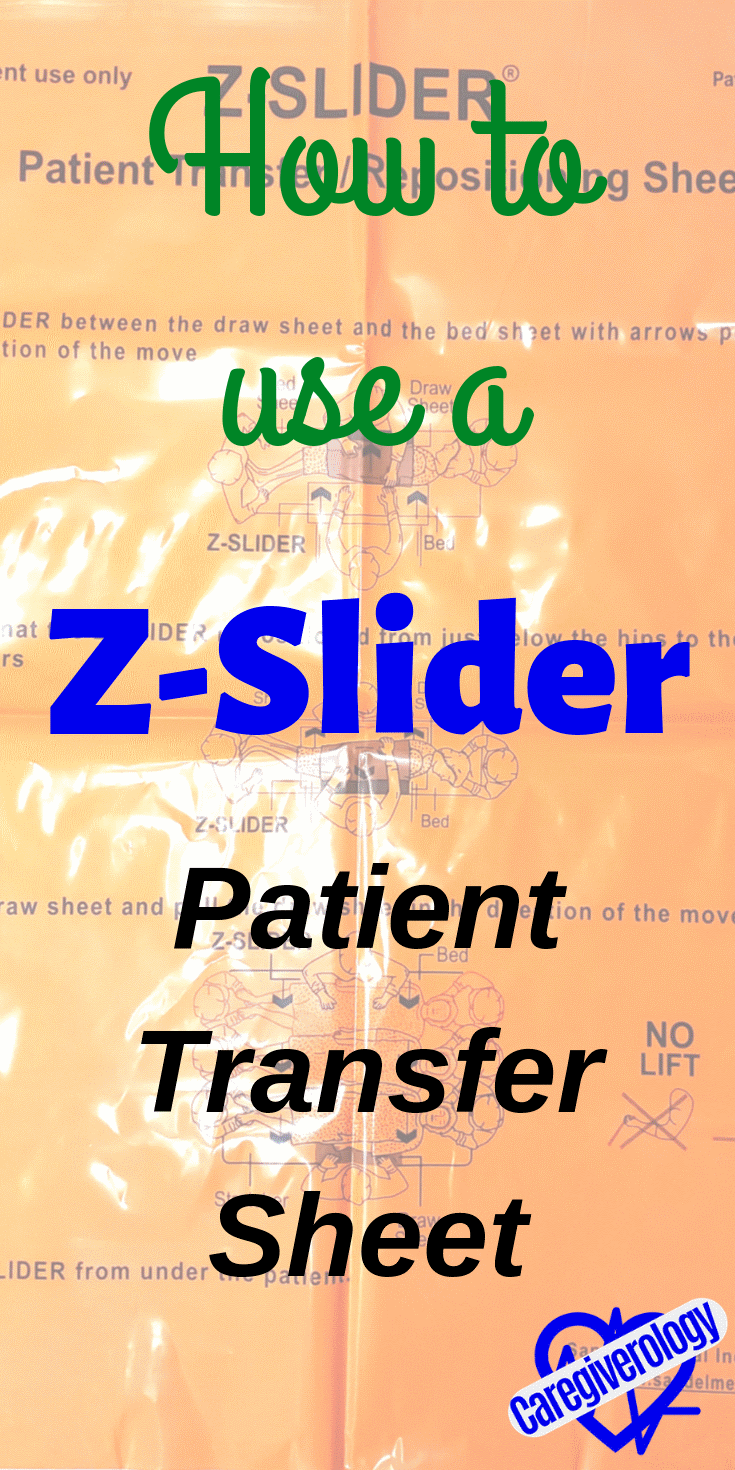
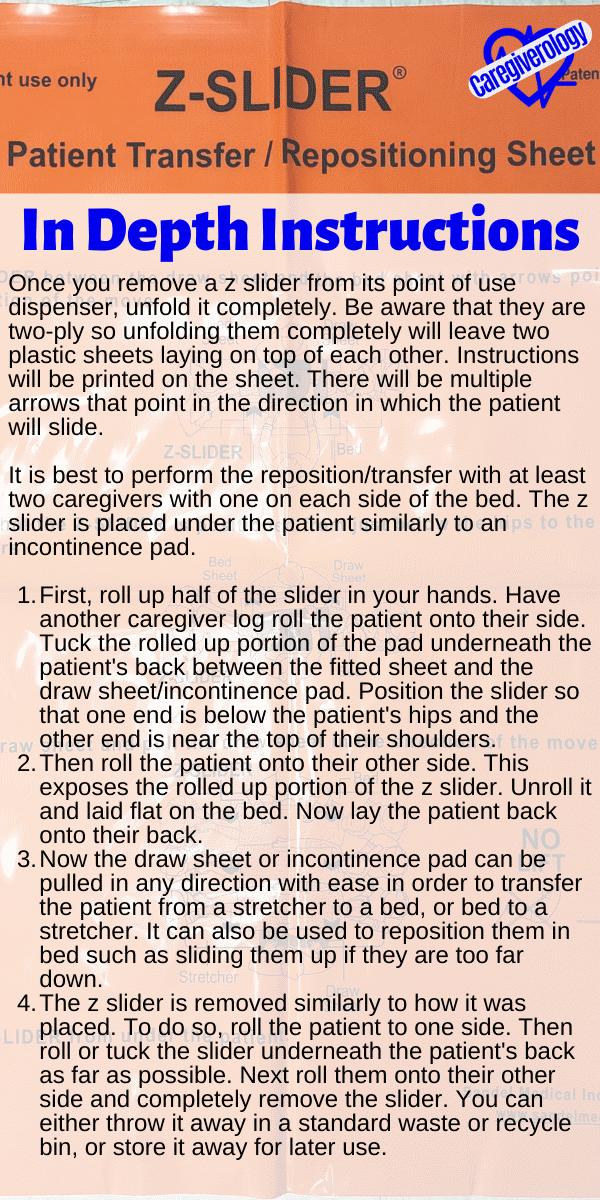



New! Comments
Have something to say about what you just read? Leave a comment in the box below.